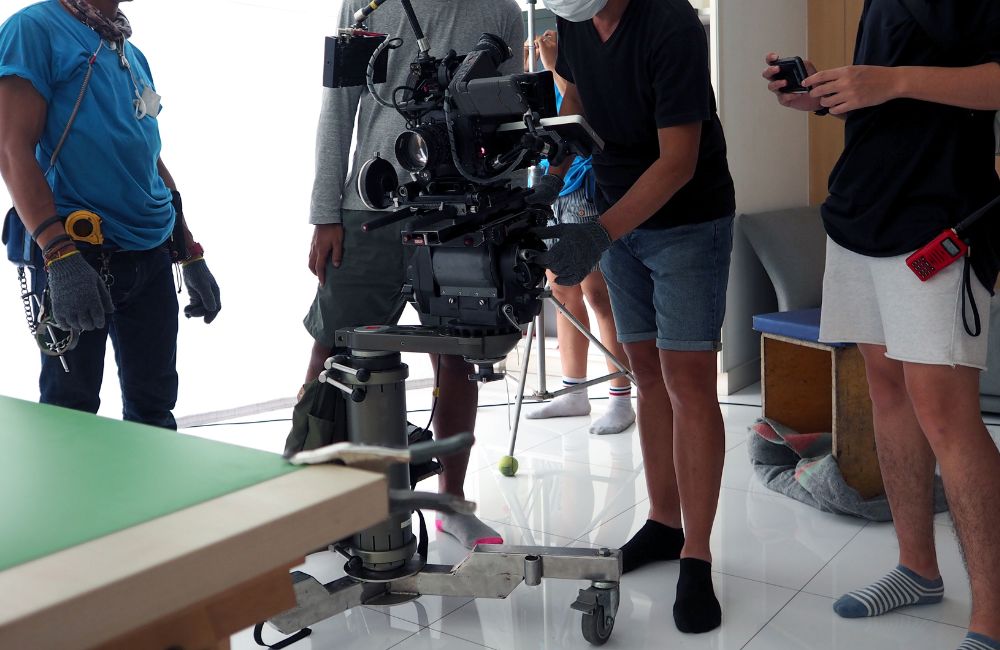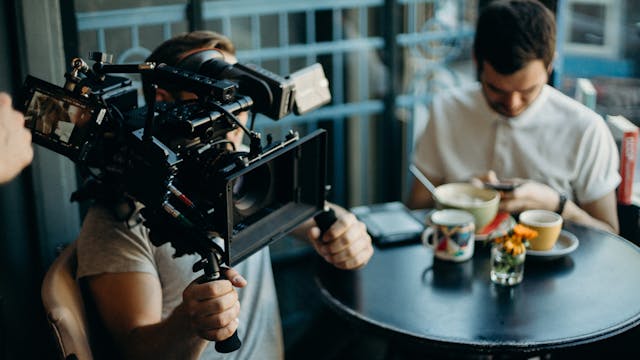- Free Estimates

Producing a high-quality event video in NYC requires more than just showing up with a camera. From pre-production to post-production, there are several critical steps that, if mishandled, can compromise the final product. Avoiding common pitfalls can make the difference between a mediocre video and one that truly captures the energy and significance of the event.
Here are six key event video production mistakes to avoid to ensure a polished, professional result that exceeds client expectations.
Pre-production is a critical phase that lays the groundwork for a smooth and successful shoot. In fact, a study reveals that approximately 39% of projects fail due to the lack of a project plan and a clearly defined goal. Without careful planning, even the best equipment and editing skills won’t be enough to save the final product.
One of the most frequent errors in event video production is skipping or rushing through the pre-production phase. While it may seem tempting to jump straight into filming, this approach often leads to a chaotic production process and a final video that feels disorganized. Key steps to include in pre-production:
Another common pitfall in event video production is the absence of a clear vision or shot list. Without a predetermined concept or idea of what needs to be captured, the footage often turns out inconsistent or lacks direction. This makes editing more difficult and can result in a video that fails to deliver the intended message. Here’s why a clear vision matters:
Failing to account for the location, necessary equipment, and timing requirements is another mistake that can impact the quality of the event video production. Without considering these factors during pre-production, the crew may face unexpected challenges on the day of the shoot, resulting in subpar footage. Consider the following to avoid this mistake:
One of the most common yet critical mistakes in event video production is neglecting the importance of high-quality audio. While visuals play a significant role, poor audio can severely impact the overall quality of the final video.
Many beginners in event video production make the mistake of relying solely on the built-in microphones of their cameras. While these microphones capture basic audio, they are often insufficient for capturing clear, high-quality sound, especially in a live event setting.
Event locations are often filled with distractions, from crowd noise to air conditioning systems, which can ruin the audio quality if not properly managed.
Skipping a proper sound check before the event begins can lead to poor audio quality during the recording.
Lighting determines the quality of the footage, and poor lighting can compromise even the most carefully planned video shoots. Ensuring the right lighting setup is essential to capture clear, professional-looking videos.
Natural light is unpredictable and can vary greatly depending on the time of day, weather conditions, and the location of the event. While it can provide a beautiful ambiance, relying solely on natural light can be risky during event video production.
Events are often unpredictable, and it’s essential to be prepared for any lighting scenario. One mistake in event video production is forgetting to bring portable lighting solutions that can adapt to different spaces or sudden changes in lighting conditions.
Lighting can change drastically over the course of an event, especially if it takes place outdoors or transitions from day to evening. A common mistake in event video production is not adjusting the lighting setup to account for these shifts.

In event video production, one of the most common mistakes that can compromise the final product is shaky or unstable camera footage. Stability is key to delivering high-quality, professional-looking videos.
The most effective way to prevent shaky footage is by using proper stabilization equipment. Tripods and stabilizers are essential tools in event video production, ensuring that the camera remains steady throughout the shoot.
While handheld shots can offer flexibility and creativity, relying on them for extended periods can lead to instability in the footage. Holding a camera for too long without support causes fatigue, which increases the likelihood of shaky shots. This issue becomes even more prominent during long events, where fatigue can set in quickly.
Smooth camera movements are critical for maintaining professional quality in event video production. Jerky or erratic movements can be jarring for the audience and disrupt the flow of the video. Videographers must consider the following:
In event video production, one of the most critical mistakes that can severely impact the final product is failing to capture the key moments of the event. A well-produced event video should include all significant highlights, ensuring that no important moments are missed.
Another common issue in event video production is relying on a single camera to capture all the action. The benefits of using multiple cameras include:
In event video production, it’s essential to capture not only the main event but also the subtle yet impactful moments that add emotional depth to the final video. This includes guest reactions, audience engagement, and candid moments that convey the energy of the event. Key highlights to capture during an event include:
To ensure high-quality results in event video production, here are some practical steps to avoid neglecting key moments:
Post-production is where the final product truly takes shape. However, this crucial phase is often rushed or not given the attention it deserves, leading to subpar results. By avoiding common mistakes in post-production, it’s possible to elevate the quality of the final video and meet client expectations.
One of the most common errors in event video production post-production is rushing through the editing process. While deadlines may be tight, it’s important to dedicate enough time to carefully review and refine the footage.
In event video production, color correction and audio balancing are two elements that can significantly enhance the final output. Unfortunately, these steps are often overlooked or under-prioritized during post-production, leading to inconsistent quality across the video.
A crucial aspect of event video production is aligning the final product with the client’s vision. Ignoring client or stakeholder feedback during post-production can lead to dissatisfaction and potentially damage future business relationships.
Event videos are incredibly valuable for marketing purposes. A well-edited highlight reel can be used on social media, websites, and email campaigns to promote future events or showcase a brand’s success. Interviews with participants or key figures can also be leveraged as testimonials. Event footage can be repurposed into shorter clips or teasers for more extensive digital marketing strategies. Additionally, video content increases engagement and visibility, making it a powerful tool for capturing attention in the crowded online space.
A highlight reel is a condensed version of an event, typically focusing on key moments, speeches, and audience reactions. It’s usually around 2 to 5 minutes long and designed to give a snapshot of the event for promotional or personal purposes. Full event coverage, on the other hand, records the entire event from start to finish, often including every speech, presentation, or performance. While a highlight reel is great for quick viewing or social media, full coverage is valuable for detailed documentation, especially in corporate or educational settings.
The cost of event video production varies based on the size, complexity, and duration of the event. For a simple one-camera setup with minimal editing, costs can range from a few hundred to a couple of thousand dollars. Larger events requiring multiple cameras, drone footage, live streaming, and extensive post-production can cost several thousand dollars. It’s important to consider what’s included in the price, such as equipment, crew, editing, and the final deliverables. Some companies offer package deals, while others provide a custom quote based on your specific needs.
When hiring an event video production team, it’s essential to evaluate their experience and portfolio. Look for a team that has experience with your type of event, whether it’s a corporate function, wedding, or concert. Make sure they have the right equipment for capturing high-quality audio and video, especially in challenging environments. A good production team should also be collaborative, responsive, and willing to understand your vision. Lastly, ensure they offer post-production services, including editing, color grading, and sound design.
The time required for editing an event video depends on the length and complexity of the footage, as well as the desired final product. For a basic highlight reel, editing could take anywhere from a few days to a week. However, if the video involves multiple camera angles, interviews, or special effects, it could take several weeks to complete.
When it comes to showcasing the essence of your corporate events, Corporate Video Production in NYC is here to assist. With years of expertise in the industry, our team ensures your brand’s story is conveyed with clarity, precision, and creativity. Whether you’re hosting an intimate meeting or a large-scale event in NYC, our tailored video solutions will bring your vision to life. Let us handle all your video production needs, so you can focus on what matters most—running your business. Work with the top Corporate Video Production team—reach out today!
139 W 57th St, New York, NY 10019, United States